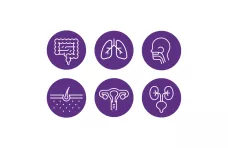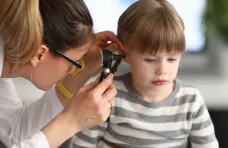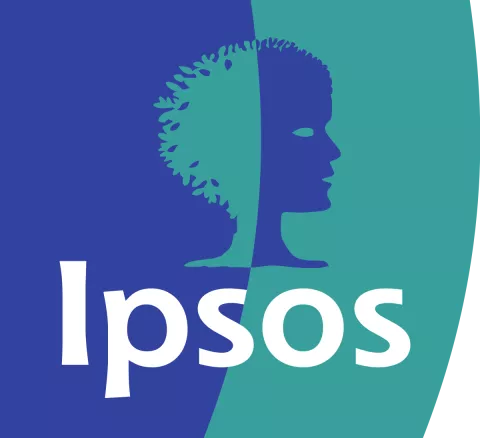Vietnam 2025: knowledge and behaviors about microbiota
The survey was conducted by Ipsos among 7,500 people in 11 countries (France, Portugal, Poland, Finland, Italy, Germany, United States, Mexico, Brazil China, and Vietnam).
Vietnam and microbiota:
a leading example of awareness and action.
Summarizing Vietnam's results in the survey
In 2025, Vietnam confirms its position as one of the most microbiota-aware countries surveyed. From high recognition of scientific terms and health products to widespread lifestyle changes and strong engagement with healthcare professionals, Vietnamese respondents stand out for both their knowledge and proactive habits. Interest in stool donation is also high, driven by a blend of scientific curiosity and personal health goals.
1. High awareness and familiarity with microbiota concepts
In 2025, Vietnamese respondents display the highest level of microbiota awareness across all surveyed countries.

94% have heard of the "microbiota" is (+2 points vs. 2024); and 43% say they know exactly what it is nearly double the global average (+4 points vs. 2024).
Both scientific and everyday terms are well known: 90% are familiar with the term gut microbiota, 75% with vaginal microbiota, and awareness of other types—skin (84%), oral (82%), lung (71%), and urinary (79%)—is similarly high.
Traditional vocabulary is also widely recognized:
of Vietnamese claim to know the term gut flora
(vs 88% overall)
say they have heard of vaginal flora
(vs 79% overall)
However, only 15% of respondents say they understand all microbiota types in detail, suggesting that broad awareness has not yet translated into comprehensive understanding.
Vietnamese familiarity with microbiota-related supplements is also strong: 94% know about probiotics, and 92% about prebiotics—levels well above the global average.

Learn all about microbiota
Learn more
2. Vietnamese people seem to adopt everyday habits that strongly support microbiota health
In 2025, 85% of Vietnamese respondents say they have changed their habits to maintain a balanced and functional microbiota. An increase of +1pt vs 2024 and well above the global average of 56%
This commitment is reflected in consistently strong health behaviors:
- 92% follow a balanced diet
- 84% do not smoke
- 89% engage in regular physical activity
- 85% limit ultra-processed foods

Vietnamese respondents also lead in microbiota supplementation: 82% consume probiotics (+3 pts vs. 2024), and 85% take prebiotics (-2 pts vs. 2024).

What is the difference between prebiotics, probiotics and postbiotics?
Find out more...One exception stands out: 80% report showering more than twice a day, a habit potentially harmful to the skin microbiota—indicating that even highly engaged populations may benefit from more nuanced education on less obvious microbiota-related behaviors.

3. Healthcare professionals, trusted and highly involved
64% of Vietnamese respondents consider healthcare professionals their most trusted source of information on the microbiota.

While other sources like teachers (11%) and family or friends (9%) are also cited, HCPs clearly lead—confirming a trend already observed in 2024.
Professionals are stepping up to this responsibility:
- 76% of respondents have received explanations about the role and functions of the microbiota
- 79% were educated on the importance of maintaining its balance
- 77% received guidance on healthy lifestyle habits
- 81% were prescribed probiotics or prebiotics—an increase compared to 2024
These conversations are primarily led by specialists (75%), especially gastroenterologists (50%), followed by dietitians and pharmacists.
Vietnam also stands out in antibiotic-related communication:
were informed about potential digestive side effects
(vs 46% overall)
were warned about the microbiota-disrupting impact of antibiotics
(vs 39% overall)
received advice on how to minimize these effects
(vs 38% overall)

Antibiotics: what impact on the microbiota and on our health?
Learn moreAltogether, these figures position Vietnam as a model for proactive, trusted, and well-distributed microbiota education led by healthcare providers.

4. High awareness and openness to stool donation
In 2025, 69% of Vietnamese have heard of stool donation, and 64% would consider doing it (vs 61% globally), with 78% supporting it for scientific research. This places Vietnam among the most informed and receptive countries.
The gut microbiota is the most cited target (68%), but other microbiota also attract interest: oral (42%), skin (42%), urinary (40%), lung and ENT (38%), and vaginal (31%).
Motivation is both personal and scientific:
believe this test would help rebalance their microbiota
(vs 53% overall)
view it as a way to understand the impact of lifestyle factors
(vs 49% overall)
see it as a way to support research and innovation in microbiome-based therapies
(vs 31% overall)
Vietnamese respondents show strong interest in contributing to science and improving their own health.
What is microbiota testing and mapping?
There are different types of microbiota testing, not only for the gut. Overall, they seek to identify microorganisms, such as bacteria and fungi, living in a specific part of the body to help inform health decisions and/or outcomes.
Intestinal microbiota testing, which seems to be the most common type of analysis, generally tests a person’s stool sample. For example, they could look for illness markers or extract DNA.
Both collective and individual gut microbiota analyses start with a stool sample. Microbiota mapping aggregates results from multiple microbiota tests to advance research and fight chronic diseases. Individual tests provide personal data on gut flora, with no definition of a clinically validated “healthy” or “pathological” microbiota. Thus, mapping fuels population-level knowledge, while testing gives a snapshot of one’s own microbiota.

Gut microbiota: still many things to be discovered
Find out more...
Methodology
This third edition of the International Microbiota Observatory was conducted by Ipsos on 7,500 individuals across 11 countries (France, Portugal, Poland, Finland, Italy, Germany, the USA, Brazil, Mexico, China, and Vietnam). Two new countries were included in this edition: Italy and Germany.
The survey was conducted over the Internet between January 21 and February 28, 2025. For each country, the sample is representative of the population aged 18 and over in terms of :
- gender
- age
- profession
- region
Representativeness was ensured via quota sampling, the most commonly used sampling method for obtaining a representative sample of the population studied. The quota variables for each country were gender, age, region, and socio-professional category. The data were adjusted:
- within each country, again to ensure that each population is representative
- globally, so that each country has the same weight. Statistical analyses were carried out using Cosi software (M.L.I., France, 1994), with a significance level of 95%
The survey population was 48% male and 52% female. The average age was 47.3 years. The sample of 7,500 individuals made it possible to carry out a detailed analysis by age group:
- 18-24
- 25-34
- 35-44
- 45-59
- 60 and over
Changes from one year to the next have been measured on a like-for-like basis, i.e. calculated taking into account only those countries present in both the first and second editions of the survey. While we do have results for the new countries included in this third edition (Germany and Italy), they have not been taken into account when calculating trends, since they were not included in the first two editions of the survey.
The questionnaire includes 16 questions on:
- socio-demographic data
- the level of knowledge about microbiomes
- the level of and desire for information from healthcare professionals
- the identification and adoption of behaviors designed to combat microbiome imbalances
- the level of knowledge, information, and behaviors of women about the vulvo-vaginal microbiome
- health data
The questionnaire lasted ten minutes and the 7,500 individuals had to complete the entire questionnaire in order to be included in the survey. The terms used in the questionnaire to talk about the microbiome have been translated and adapted to the terms used in each country.


